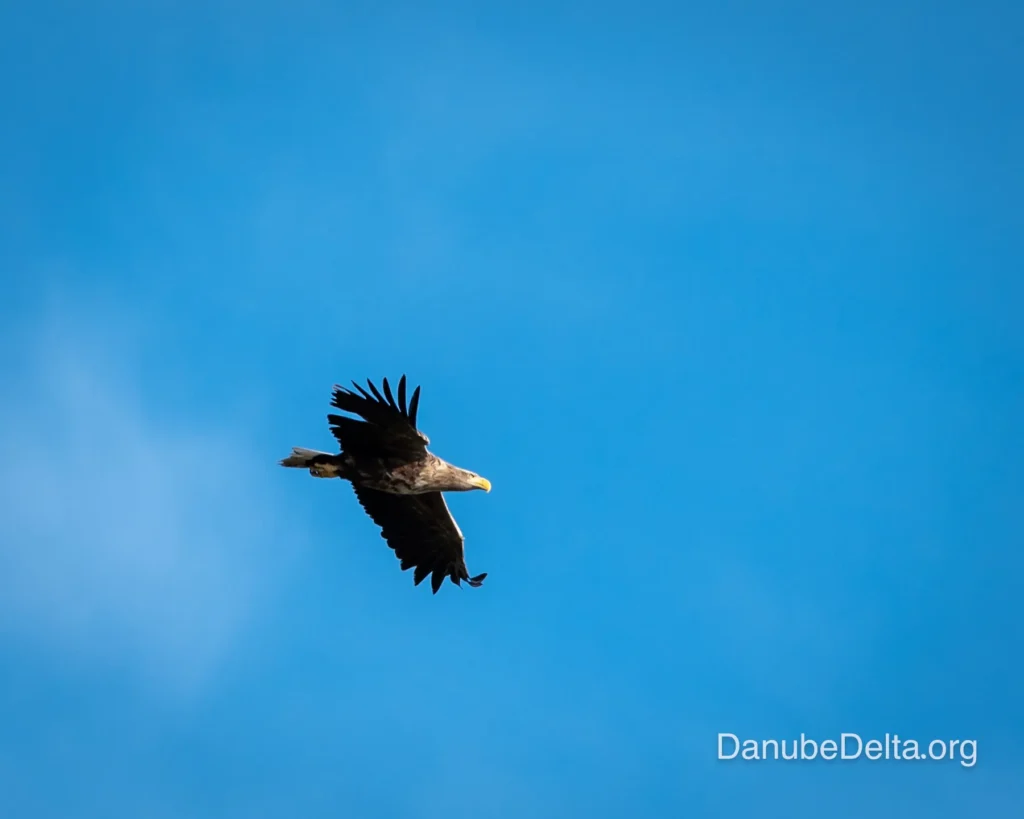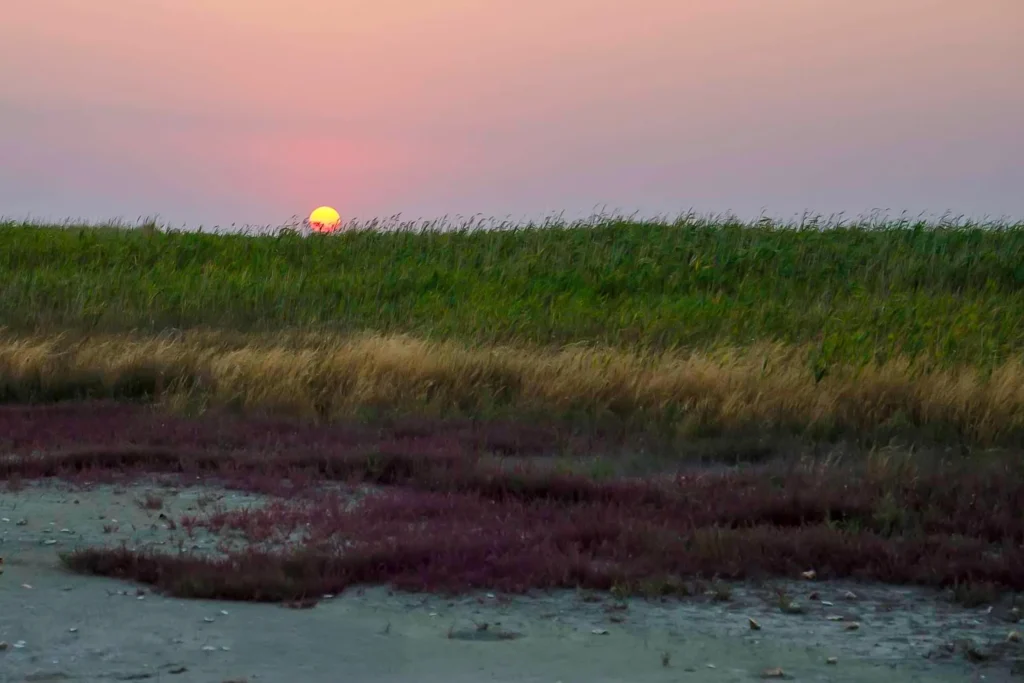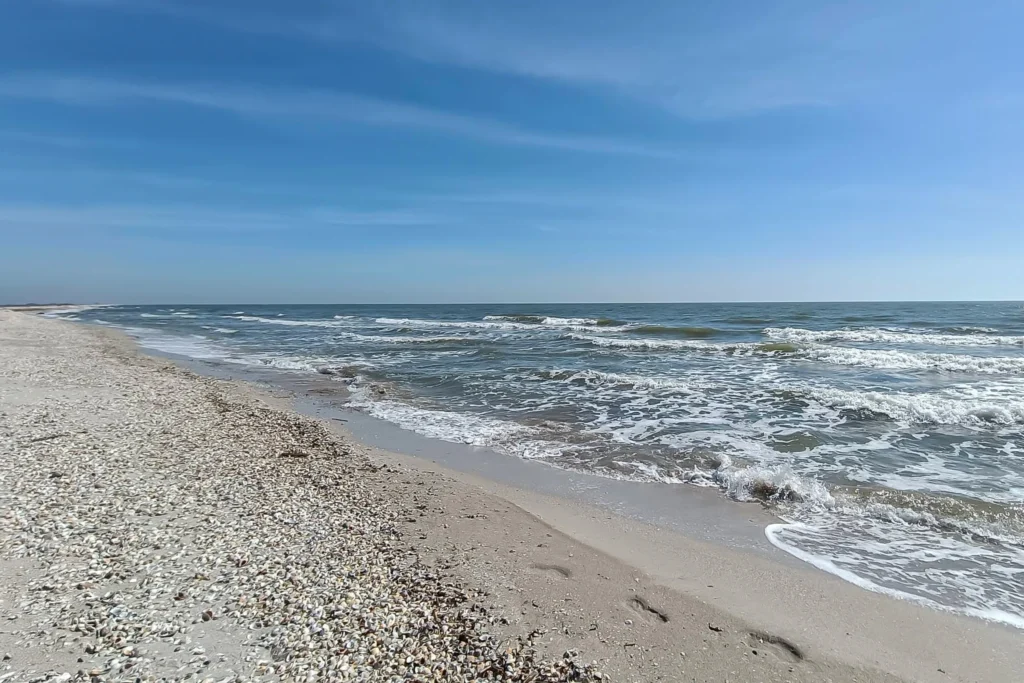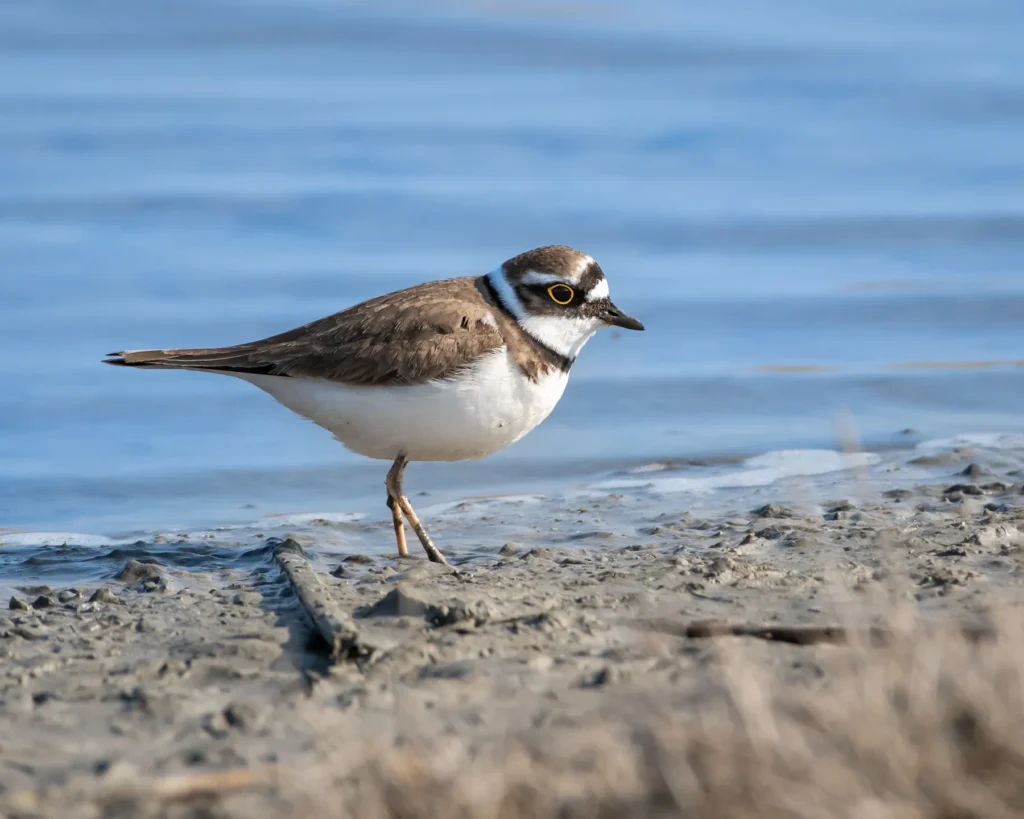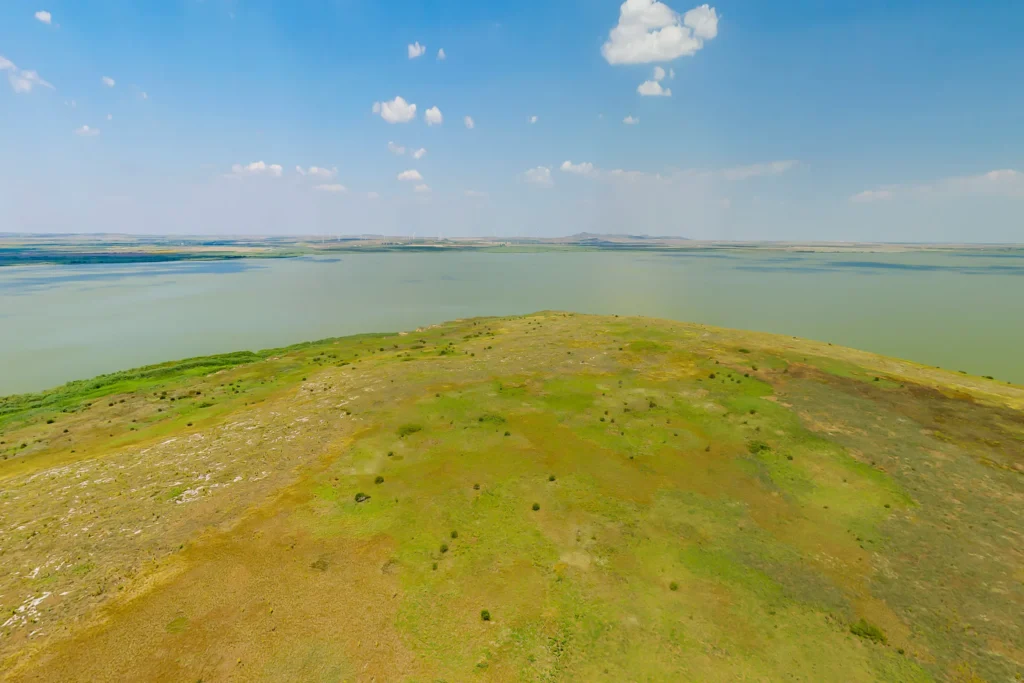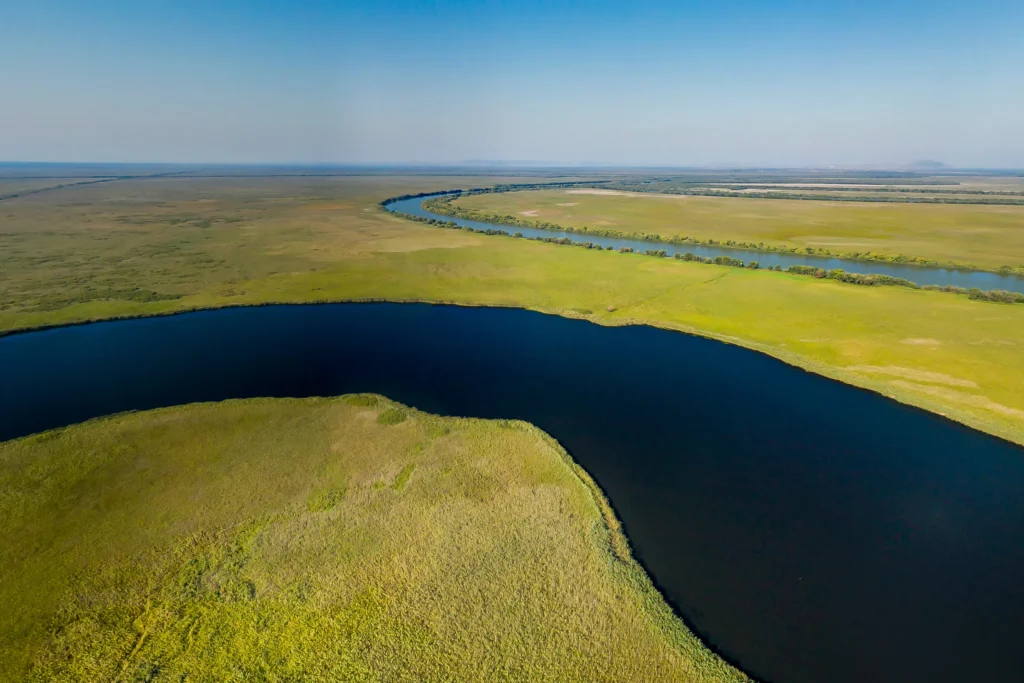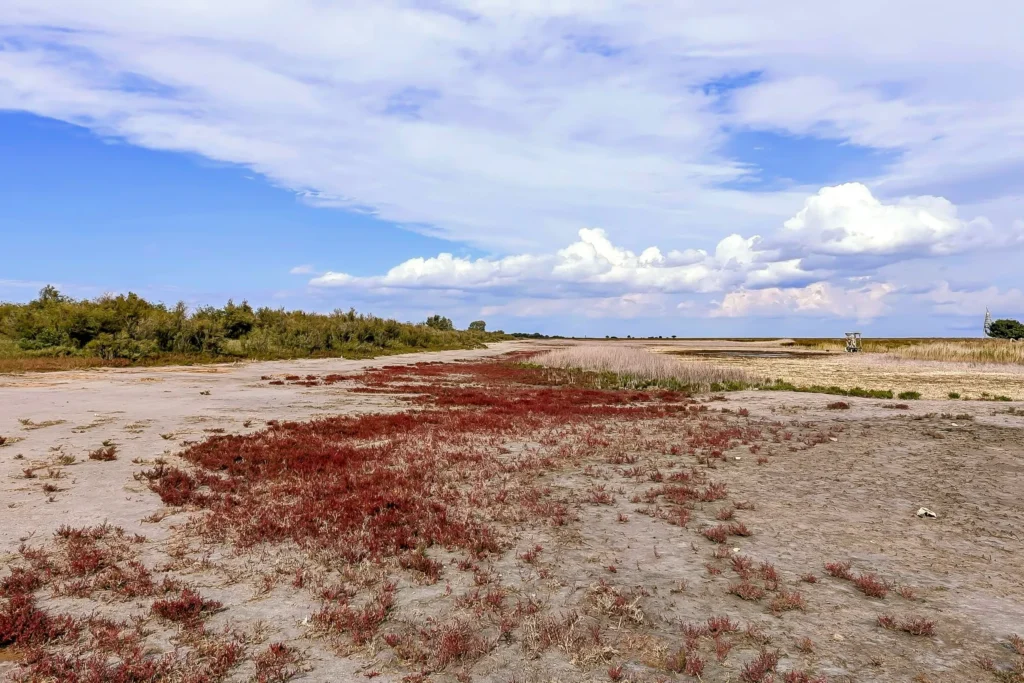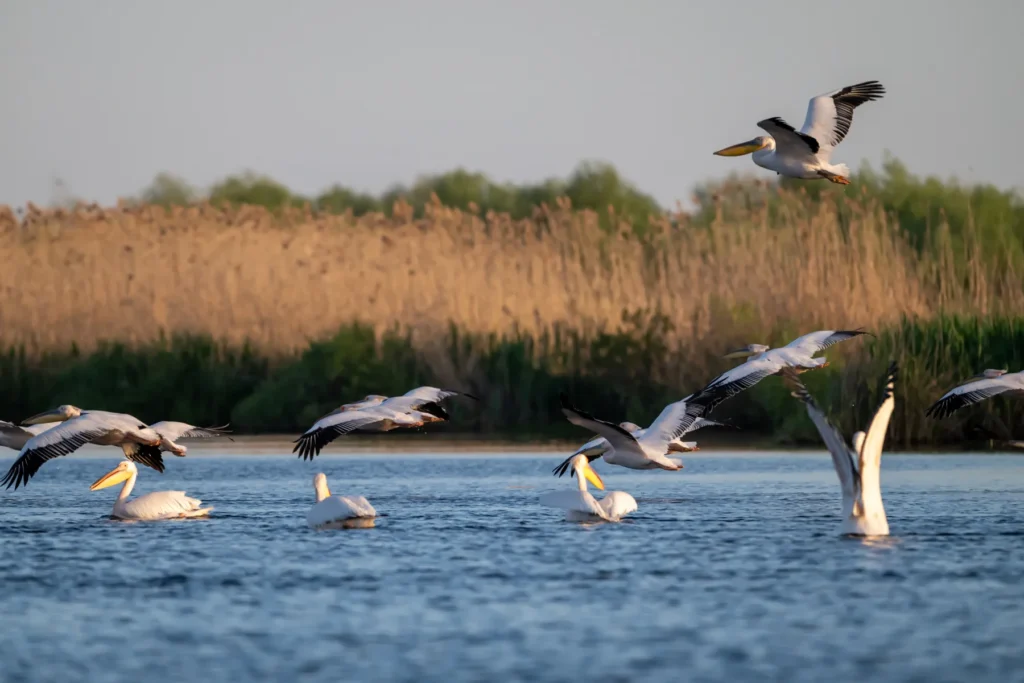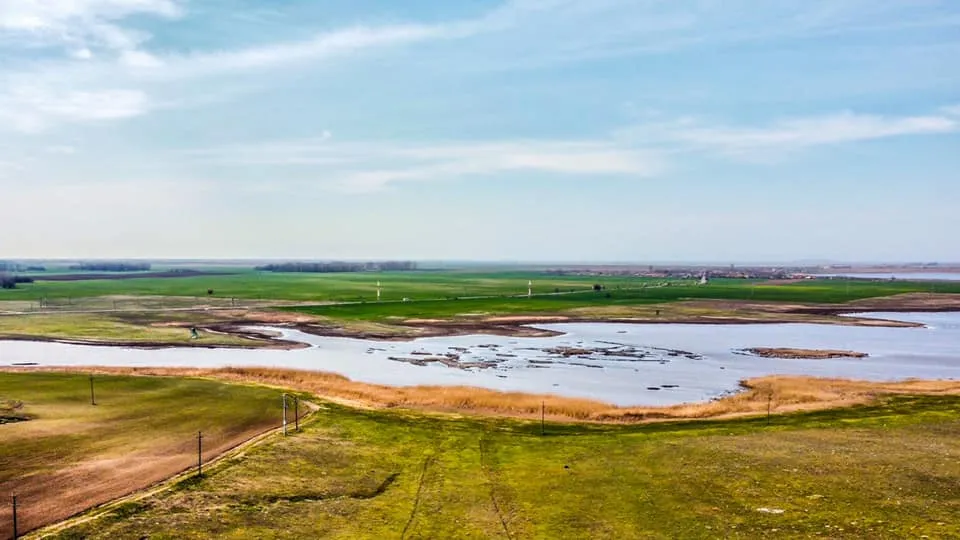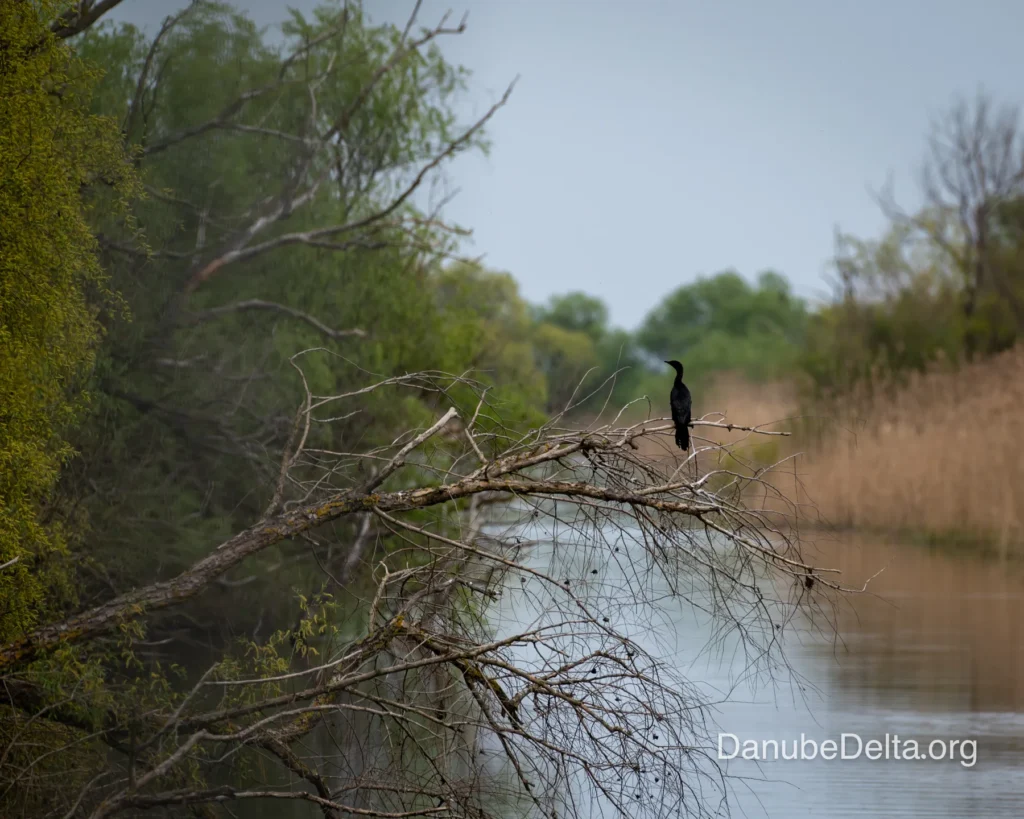Rotundu Lake, a strictly protected area in the Danube Delta
Rotundu Lake - Danube Delta
Introduction - Rotundu Lake
Lake Rotundu is an essential part of Romania's natural heritage, recognised as a strictly protected area within the vast Danube Delta Biosphere Reserve. This designation emphasises its exceptional ecological value and the imperative need for rigorous conservation. Its fully protected status places it among the most precious aquatic ecosystems in the region, contributing significantly to the biodiversity of the Danube Delta.
The status of Strict Nature Reserve conferred to Lake Rotundu corresponds to category I Ia IUCN (International Union for Conservation of Nature), the highest level of protection. This classification is reserved for almost untouched natural areas managed primarily for scientific research and ecological monitoring. Established in 1991 and officially declared a protected area by Law No 5 of 6 March 2000, the reserve aims to preserve unique ecosystems and genetic resources in a state as undisturbed as possible by human activities. This strict regime entails significant restrictions on public access and human activities, giving absolute priority to the ecological integrity of the site.
A defining characteristic of Lake Rotundu is its status as the "last area of its kind unaffected by dyking" within the Somova-Parcheș lake complex. This is of crucial importance as it implies that other similar lake areas in the region have been subject to significant hydrological changes through dyking works, often for agricultural expansion or flood control. Therefore, the absence of such interventions in Lake Rotundu makes it a valuable benchmark for understanding the natural hydrological and ecological processes specific to floodplains in the Danube Delta, providing an insight into the initial state of the ecosystem before anthropogenic alterations. This almost pristine state makes it invaluable for scientific studies and emphasises its critical role in the conservation of a rare and undisturbed example of a meadow lake.
Geographical and Geomorphological Features
Rotundu Lake is located in the north-western part of Tulcea County, in the north-eastern part of the Danube Delta, on the south-eastern administrative territory of Isaccea. It is located close to the national road DN22, which connects the municipality of Brăila with Tulcea, facilitating access to the adjacent area. The lake is an integral part of the Somova - Parcheș lake complex, a meadow area with specific hydrological dynamics.
The approximate geographical coordinates of Lake Rotundu are 45°13′59″N north latitude and 28°30′58″E east longitude. These precise coordinates allow precise localisation of the protected area on maps and georeferencing systems.
In terms of size and physical characteristics, Lake Rotundu covers an area of 228 hectares. Being a meadow lake, its landscape is defined by a prominent strip of reed at the edge of the lake. Towards the west-south-west, a hillside approximately 50-60 metres high contributes to the diversity of the surrounding relief. In places, along the edges of the lake and in the channel connecting it with Lake Telincea, sporadic swimming plants such as snowdrops can be observed. About 8 kilometres to the south is Sarica Hill with a maximum height of 289 metres. Towards the north, in the direction of the Danube, there is a wide strip of reed and a line of willows along the river bank, which are characteristic features of the delta landscape.
Lake Rotundu is part of the Somova-Parcheș lake complex, having hydrological connections with other water bodies. It is bounded to the east by Lake Telincea and to the west by Lake Saon. Its northern boundary is defined by the northern edge of the lake itself. This interconnection, together with the absence of dikes, allows a natural hydrological regime, essential for the ecological functioning of the lake. The presence of a wide strip of reed and willows along the Danube shoreline indicates a healthy riparian zone acting as a natural barrier. This natural connectivity and the lack of artificial barriers are vital for maintaining the ecological functions of the lake, in particular for fish spawning and birdlife, which depend on the natural water flow and associated habitats. Such a more robust and resilient ecosystem provides a glimpse of how the Delta functioned before extensive anthropogenic alteration, reinforcing its conservation value.
Biodiversity and Ecological Importance
Lake Rotundu, through its status as a strictly protected area, supports a remarkable biodiversity, being of particular ecological importance for wetland flora and fauna.
Flora The vegetation of the reserve area is adapted to the specific conditions of wetlands and to higher amplitudes of the storm surge. Notable floristic species identified include:
- Pipirigul (Juncus gerardii)
- The marsh melon (Euphorbia palustris)
- Pirul de mare (Elymus sabulosus)
- Swimming plantsuch as the water lilies, which occur sporadically along the edges of the lake and in the channel connecting the lake with Lake Telincea.
- Stufulwhich form a wide strip at the edge of the lake, contributing to the landscape structure and wildlife habitat.
- The, present along the Danube, adding to the diversity of woody habitats.
Fauna Lake Rotundu is particularly important for aquatic avifauna and fish populations, as well as a refuge for certain mammal species.
- Avifauna: The lake area is of particular interest to the region's aquatic avifauna, serving as a crucial nesting, nesting (breeding) and feeding site. It is an important area for migratory and wintering birds.
- Fish reproduction: The lake is vital for the reproduction of several species of fish, especially for platică (Abramis brama). It also preserves a tinophilic ichthyofauna characteristic of mesotrophic and eutrophic waters, including species such as lin (Tin Tin Tin) and caracuda (Carassius carassius).
- Mammals: Because of its isolation, Rotundu Lake is a haven for mammals such as vine (Lutra lutra), mink (Mustela lutreola), hermelina (Mustela erminea) and wild boar (Sus sowThe presence of these species emphasises the lake's role as a wildlife sanctuary.
Despite its ecological importance, Lake Rotundu is affected by eutrophication and massive sediment accumulation. At the bottom of the lake basin, these accumulations generate intense processes of putrefaction, manifested by a thick, black-coloured slime with a characteristic odour of hydrogen sulphide. This indicates a severe lack of oxygen in the water. Eutrophication, i.e. excessive nutrient enrichment, causes algal blooms, which, when decomposing, consume oxygen in the water, leading to anoxic conditions. The massive accumulation of sediments exacerbates the problem by shallowing the water and providing more organic matter for decomposition, which further depletes oxygen. This anoxia directly threatens aquatic life, especially fish and benthic invertebrates, which are essential food sources for birds and mammals. It can lead to fish mortality and an overall reduction in aquatic biodiversity, despite the lake's role in fish reproduction. The presence of eutrophication in a strict nature reserve such as Lake Rotundu underlines the pervasive nature of this environmental challenge, even in the most protected areas, suggesting external pressures beyond the immediate boundaries of the reserve.
Conservation Status and Environmental Challenges
Lake Rotundu is a protected area of national interest with a particularly rigorous conservation status. It is classified as a Strict Nature Reserve of mixed type, corresponding to IUCN category Ia. This designation is the highest form of protection, aimed at preserving ecosystems and genetic resources in the least disturbed state. Lake Rotundu is an integral part of the Danube Delta Biosphere Reserve, which in turn benefits from international recognition, having been a UNESCO World Heritage Site since 1991 and a Ramsar Site (wetland of international importance) since 1991. Lake Rotundu is one of 20 strictly protected areas within the RBDD, covering 228 hectares.
Historically, the Rotundu Lake area has been included in the Danube Delta Biosphere Reserve since 1990, according to the Government Decision No 248/1994. This early decision reflects a long-standing awareness of its ecological value and a commitment to its long-term conservation. Lake Rotundu is also part of the European ecological network Natura 2000, as a Site of Community Importance (ROSCI0065 Danube Delta) and a Special Protection Area for Birds (ROSPA0031 Danube Delta and Razim Complex).
Despite its strictly protected status, Lake Rotundu faces significant ecological challenges. The main problems identified are eutrophication and extensive sediment accumulation. These phenomena lead to intense rotting processes at the bottom of the lake, where the silt becomes thick, black in colour, and gives off a characteristic odour of hydrogen sulphide, indicating a severe lack of oxygen. Eutrophication is often the result of excessive input of nutrients (nitrogen and phosphorus) from external sources such as agricultural runoff or urban discharges in the catchment. Sedimentation can be amplified by changes in land use, erosion or alterations in the hydrological regime in neighbouring areas.
The presence of these problems in an area with such a high protection status as Lake Rotundu (IUCN Ia) emphasises a conservation paradox: even the best protected ecosystems can be vulnerable to threats originating outside their immediate boundaries. This situation suggests that threats do not primarily originate from direct human activities within the reserve, where access is restricted, but rather from external sources at regional or transboundary scales. Therefore, the long-term health of Lake Rotundu depends not only on effective internal management, but also on the implementation of effective environmental policies and practices at the level of the entire Danube catchment and surrounding agricultural land. This underlines the need for integrated river basin management and international co-operation to ensure sustainable protection of such valuable ecosystems.
Conservation Efforts and Ongoing Scientific Studies
The Administration of the Danube Delta Biosphere Reserve (ARBDD) is working hard to monitor and conserve Lake Rotundu and other strictly protected areas in the Danube Delta.
Monitoring Actions The ARBDD carries out regular monitoring to assess the conservation status of habitats and species. In recent years, hundreds of such actions have been carried out in strictly protected areas and ecological reconstruction areas. For example, in 2024, 210 monitoring actions in ecological reconstruction areas and 739 habitat monitoring actions were recorded, and in 2023, 208 monitoring actions in ecological reconstruction areas and 794 habitat monitoring actions, including in Rotundu Lake and other areas of highest interest. These activities are essential for collecting the data needed to understand ecosystem dynamics and for early identification of any undesirable changes.
Decollution and Eutrophication Reduction Projects To combat the problems of eutrophication and sediment accumulation, active projects are being implemented to decolourise (remove sediments) the lakes in the Delta. A relevant example is the PNRR project "Decollution of Danube Delta Lakes to reduce eutrophication and maintain biological diversity", which aims to improve the ecological health of the affected lakes, including Lake Rotundu. These initiatives, often funded through European programmes, are crucial for restoring the ecological functions of the lakes and maintaining biodiversity. Lake Rotundu is mentioned in the context of environmental assessment studies and regional development strategies, confirming its integration into wider conservation plans.
Scientific Studies and Research Initiatives Lake Rotundu is a site of particular interest for the scientific study and conservation of biocenoses adapted to significant amplitudes of storm surges. Scientific studies are carried out before, during and after the implementation of conservation works, in order to quickly identify possible undesirable environmental impacts and ensure immediate remedial measures. In the Dobrogea region, which includes areas such as Lake Rotundu, comparative studies are also being carried out on coastal biodiversity, anthropogenic impacts and opportunities for habitat conservation and restoration. This research contributes to a deeper understanding of the ecosystem and the development of evidence-based conservation strategies.
The integrated approach to conservation, combining direct interventions (such as de-pollution), constant monitoring and scientific research, often supported by significant national and European funding (such as the NRRP), indicates a sophisticated and proactive strategy. This approach is essential to tackle complex environmental problems such as eutrophication, which have multiple causes and require sustained and coordinated efforts. Such a strategy marks a transition from reactive measures to data-driven management, fundamental for the long-term sustainability of such a valuable ecosystem.
Visitor Information and Regulations
Access to the Danube Delta Biosphere Reserve (DDBBR) is strictly regulated to protect fragile ecosystems. Visitors must obtain specific permits from the Administration of the Danube Delta Biosphere Reserve (ARBDD), which can be purchased online (https://permise.ddbra.ro/), at the ARBDD information centres in Tulcea, Crișan, Sulina or Murighiol, or by SMS.
Strict Regulations for Rotundu Lake (Strict Nature Reserve) It is essential to realise that Lake Rotundu, having the status of a Strict Nature Reserve category Ia IUCN, is under the most stringent protection regime in the Delta.
Unauthorised access to this area is strictly prohibited. The main purpose of these areas is scientific research and monitoring, not general tourism. Activities such as camping, disturbing wildlife, rubbish dumping or vehicle access to the water's edge are prohibited. Although general access permits in the RBDD allow some areas to be visited, they do not grant the right to enter strictly protected areas such as Lake Rotundu. This distinction is crucial to prevent accidental breaches of regulations and to protect the fragile ecosystem.
Responsible Visiting Guide for the Danube Delta (in general) For visitors exploring the permitted areas of the Danube Delta, following strict rules is fundamental to minimise human impact:
- Travel is exclusively on established tourist routes.
- It is forbidden to disturb birds, solitary nests and chicks.
- Rubbish must be collected and transported outside the reserve; littering is strictly forbidden.
- Cutting down trees and picking plants of any kind is forbidden.
- Avoid loud noises to avoid disturbing wildlife.
- Car access to the waterfront in protected areas is prohibited.
- Bird-watching is recommended from the specially designed observation towers.
- Recreational/sport fishing is allowed only with valid licences and in designated areas, according to regulations.
Clarifying the distinction between general access permits in the Danube Delta and a strict entry ban in Lake Rotundu is crucial. While a webpage providing detailed information about the Danube Delta would naturally include details of permits and fees, it is imperative to emphasise that these permits no gives the right to enter strictly protected areas such as Lake Rotundu. Failure to do so could lead to unintentional breaches of the rules by well-meaning tourists, resulting in fines for visitors and, more seriously, irreversible ecological damage to the reserve. Communication must therefore prioritise accurate conservation information, managing public expectations and reinforcing the protected status of Lake Rotundu.
Natural Heritage Conservation of Rotundu Lake
Lake Rotundu stands as a testimony to the unrivalled biodiversity of the Danube Delta. Its status as a strict nature reserve, untouched by historical dams, makes it a rare and invaluable meadow ecosystem. Its role is crucial for aquatic avifauna, fish spawning and as a refuge for sensitive mammal species, reinforcing its exceptional ecological value.
Ongoing challenges such as eutrophication and sedimentation emphasise the need for sustained and integrated conservation efforts. These include constant monitoring of ecological status, implementation of de-pollution and eutrophication-reduction projects, and further scientific research. For the general public, understanding and compliance with strict access regulations are paramount to ensure the long-term conservation of this fragile and vital natural heritage. Interacting responsibly with the Danube Delta Biosphere Reserve, by complying with all the rules and obtaining the necessary permits, indirectly contributes to the protection of its most sensitive areas, including Lake Rotundu.
As a whole, Lake Rotundu serves as a powerful reminder of the interconnectedness of ecosystems and the importance of the balance between human activity and the imperative of nature conservation. Its future depends on a collective commitment to protect not only its immediate boundaries, but the broader ecological health of the entire region.
Events in the Danube Delta
Accommodation to suit all tastes:
Whether you prefer the cosiness of modern villas, the rustic atmosphere of traditional guesthouses or the adventure of camping, they offer a variety of accommodation options to suit your needs and budget.
